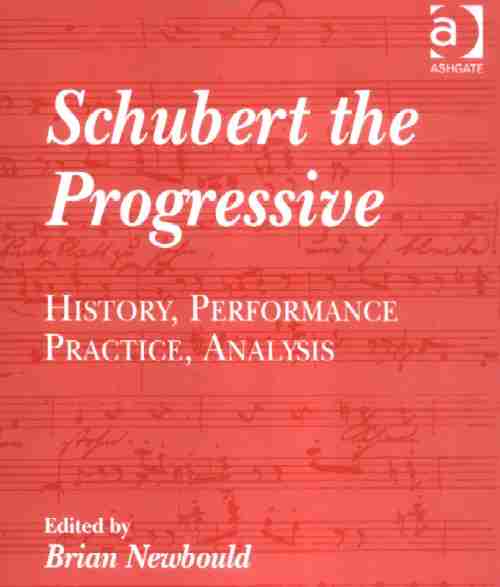
T he opening theme chimes majestically, inner voices nestled between pedal points in the high and low registers. Schubert then responds with an arpeggiated triplet figure that forms the basis for much of the movement. Wide leaps, double thirds, and hand-crossings take us on a journey that maintains its majesty and lyricism. The slow movement, the Andantino, starts as a barcarolle but becomes tempestuous in its chaotic middle section. Musicologist John Reed calls it ‘probably the wildest outburst of fantasy Schubert ever committed to paper.’ Chromatic scales, trills, tremolandi and thunderous broken octaves become increasingly explosive in this central episode. Melody is abandoned. Order disintegrates into utter hysteria and despair. This is as close to an aural description of a physical and mental breakdown as Schubert will ever get, as he looks into the abyss. The movement returns to the simplicity and quietude of the opening. Melody and order are restored as the movement ends in tragic resignation.”Context-dependent ambiguity must serve expressive purposes that the composer intends and that the performers and audience can grasp, or else it does no good. The first movement of the Schubert Piano Sonata in A Major (D. 959) has plenty of ambiguity to try and comprehend. Chord progressions that appear at the end of the movement are anticipated by earlier material in the movement. Without those anticipatory hints the ending would be ambiguous. Instead, the final statement of the progression provides a long-awaited, satisfying resolution. It is not a ‘retracing’ of a trail of ‘breadcrumbs’ Schubert left for us. It’s the tracing itself, coherently concluded. The two-chord voice-leading is crucial for how this ‘set-up’ and ‘resolution’ scheme works.
— Laurie Schulman, FCM program notes.
Viewed from this perspective, this movement is maybe more cohesive than some musicologists (Donald Tovey and others) have judged it to be. Brendel is, I think, closer to what I have in mind—in his writings (Fisk, too) and in his playing—and Zacharias seems to endorse this view as well in his performance tonight in Kansas City.
Tovey especially seems to have looked for orderly exposition and recapitulation as the way things should go. Schubert did not comply. The first movement of D. 959 arrives at its end not to recapitulate but to express itself forthrightly for the very first time.
Mozart and Haydn sonatas typically signal the beginning of the recapitulation with a return to the tonic and to the primary theme. Additionally, Mozart and Haydn usually emphasize the signalled return by restating the primary thematic material exactly as it appeared in the beginning, without changes in orchestration or melodic contour. Schubert doesn’t hold to this practice; or at least in D. 959 he broke the mould. The things that some writers have said are ‘chaotic’ in this sonata strike me instead as diaristic entries of extemporaneous musical thoughts by someone who knows he will likely die soon. It was September, 1828, when Schubert was editing the D. 959 manuscript, the fair-copy as we have it today. It was two months before his death. This was not for Schubert a time of conventional composerly exposition. What he instead gives us is a vivid essay on the end-of-life journey that was commencing and that he full-well knew was commencing.
The psychological effect of this sonata’s design can be unsettling—and surely this is what Schubert intended us to feel. “That’s strange! Schubert’s already heading for the ‘barn’. I must’ve missed the start of the recapitulation. But which bit that he’s played would we be recapitulating anyway?”
Christian Zacharias provided wonderful interpretations of Schumann’s Kinderszenen, Op. 15, and Beethoven’s Sonata in E-flat Major, Op. 7. But, for me, the most rewarding moments of the evening were in Zacharias’s inspired rendering of the Schubert. The audience responded with an immediate standing ovation. Superb performance, Christian!
W e tend to think of virtuosity as the musical equivalent of an extreme sport: lots of fast, loud, bravura passages that show off finger power and agility, ideally with enough originality in the phrasing to make the performance seem more than just whiz-bang display. But in his recital at the Rose Theater on Wednesday evening, pianist Christian Zacharias argued that virtuosity comes in other forms as well, most notably as an expression of patient introspection. That may seem counterintuitive, but some of Mr. Zacharias’s most electrifying playing was graceful and understated, with commanding gradations of tension. This was certainly true of his account of Schumann’s Kinderszenen. These are gentle pieces at heart, and Mr. Zacharias addressed most with a light touch that defined fantasy in terms of dreaminess.”
— Allan Kozinn, NYT, 23-FEB-2008.
- Christian Zacharias website
- Brendel A. "Schubert’s Last Sonatas," in Music Sounded Out: Essays, Lectures, Interviews, Afterthoughts. Farrar Straus Giroux, 1990. pp. 72-141.
- Brendel A. Schubert’s Last Sonatas. (Philips DVD, 1988.)
- Brillenburg-Wurth C. The musically sublime : infinity, indeterminacy, irresolvability. PhD dissertation. Univ Groeningen, 2002. (esp. pp. 257ff.) [1MB pdf]
- Collins B. The post-modern genius of Beethoven: Another reason I don’t keep a gun in the house. Poem-of-the-Week blog, 22-FEB-2008.
- Cone E. Schubert’s Beethoven. The Musical Quarterly. 1970; 56:779-95.
- Daverio J. Crossing Paths: Schubert, Schumann, and Brahms. Oxford Univ, 2002.
- Fisk C. Returning Cycles: Contexts for the Interpretation of Schubert's Impromptus and Last Sonatas. Univ California, 2001.
- Kozinn A. An introspective shade of virtuosity. NYT, 23-FEB-2008.
- Newbould B, ed. Schubert the Progressive: History, Performance Practice, Analysis. Ashgate, 2003.
- Tovey D. Essays and Lectures on Music. Oxford Univ, 1949. (p. 119)

No comments:
Post a Comment